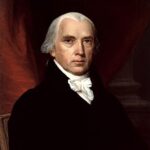The Constitutional Architect
James Madison arrived at the 1787 Constitutional Convention armed with extensive research and revolutionary ideas. He had studied ancient confederacies and modern governments for months. His Virginia Plan became the convention’s foundation document. 📊 Madison’s plan proposed a strong federal government with three branches. This framework replaced the failing Articles of Confederation.
Madison’s Innovative Framework
The Virginia Plan introduced proportional representation in Congress. Madison advocated for separation of powers between executive, legislative, and judicial branches. His system of checks and balances prevented any single branch from dominating. ⚖️ This U.S. Constitution structure ensured governmental stability. Madison also championed federalism, balancing state and national authority.
Constitutional Convention Leadership
Madison took detailed notes throughout the four-month convention. His documentation preserved the founders’ debates for posterity. He skillfully negotiated compromises between large and small states. 📝 The Connecticut Compromise merged his Virginia Plan with the New Jersey Plan. Madison’s diplomatic skills kept the convention from collapsing during heated disagreements.
Impact:
Immediate Constitutional Success
The U.S. Constitution Madison crafted was ratified by nine states within ten months. His Federalist Papers, co-authored with Hamilton and Jay, convinced skeptical states to ratify. New York and Virginia’s ratification secured the Constitution’s adoption. 🌟 Madison’s framework immediately stabilized the young nation’s government. The new system attracted international respect and investment.
Enduring Democratic Legacy
Madison’s constitutional design has survived for over 235 years. His separation of powers model influenced democratic movements worldwide. The U.S. Constitution became a template for emerging democracies globally. 🌍 Latin American and European nations adopted Madison’s federal principles. His Bill of Rights amendments protected individual liberties for generations.
Long-term Governmental Stability
The constitutional framework prevented the governmental chaos that plagued other republics. Madison’s checks and balances system weathered civil war, world wars, and constitutional crises. His federalist structure allowed America to expand from 13 to 50 states. 🏛️ The U.S. Constitution remains the world’s oldest written national constitution still in use. Madison’s genius created humanity’s most successful democratic experiment.
